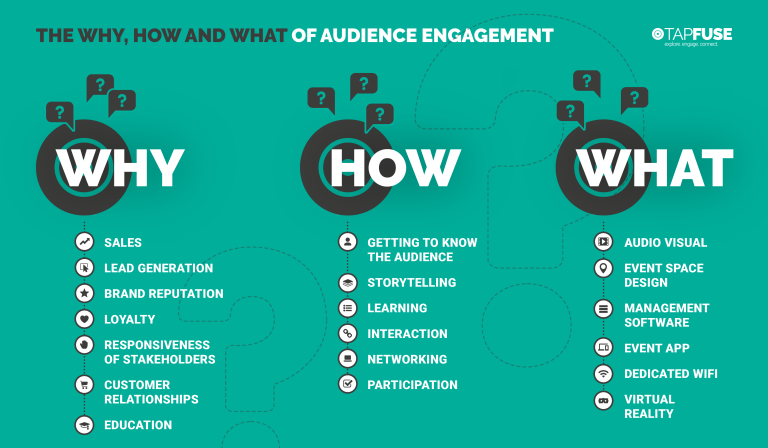Effective Ways to Use Pauses in Your Speech
Using pauses effectively in your speech enhances communication and keeps your audience engaged. This article explores various methods to effectively implement pauses in your speech to make it more impactful, influential, and memorable.
Whether you want to emphasize a key point, allow your audience to process information, or create tension and anticipation, the strategic use of pauses can greatly improve the effectiveness of your speech. Incorporating pauses helps to maintain a good pace, adds depth to your delivery, and allows your audience to absorb the information you are sharing.
By implementing these methods, you can elevate your speaking skills and leave a lasting impression on your audience.

Credit: mannerofspeaking.org
Benefits Of Using Pauses In Your Speech
Discover the power of using pauses in your speech to captivate and engage your audience. Strategic pauses can enhance the delivery of your message, allowing listeners to absorb the information and creating a more impactful and memorable presentation.
Using pauses strategically in your speech can have a profound impact on your audience. Pauses help to amplify key points, create suspense and anticipation, and improve comprehension and retention. Let’s explore each of these benefits in more detail:
Amplify Key Points:
- Pausing before or after a key point allows it to sink in and gives it emphasis, making it more memorable and impactful.
- By pausing before delivering a crucial piece of information, you can grab your audience’s attention and build anticipation for what’s to come.
- Pauses also provide an opportunity for your audience to reflect on and absorb the significance of the point you just made.
Create Suspense And Anticipation:
- Pauses strategically placed during your speech can create a sense of suspense and anticipation, keeping your audience engaged and eagerly waiting for what you’ll say next.
- These intentional pauses build suspense and intrigue, making your listeners more attentive and receptive to your message.
- By withholding information for a brief moment, you can generate curiosity and make your audience eager to hear the rest.
Improve Comprehension And Retention:
- Pauses provide your audience with valuable time to process and fully comprehend the information you’ve shared.
- By slowing down your speech and incorporating pauses at appropriate intervals, you enable your listeners to digest and absorb the content more effectively.
- Pausing between different sections or ideas gives your audience the opportunity to mentally organize and retain the information you’ve presented.
Using pauses strategically throughout your speech can enhance your message, captivate your audience, and leave a lasting impression. So, consider incorporating well-placed pauses in your next presentation or speech to harness these benefits and deliver a more impactful message.
Techniques For Using Pauses Effectively
Discover powerful techniques to effectively utilize pauses in your speech. Learn how strategic pauses can enhance your delivery, emphasizing key points and allowing your audience to absorb and process information more effectively. Master the art of using pauses, and captivate your listeners with your persuasive and impactful communication skills.
Pauses are powerful tools that can greatly enhance your speech and captivate your audience. By strategically incorporating pauses into your delivery, you can build tension, allow listeners to process information, and emphasize key points. Here are three effective techniques for using pauses to make your speech more impactful:
The Dramatic Pause: Building Tension For Impact
- Pause before a significant statement or revealing a surprising fact: This pause creates anticipation and captures your audience’s attention, making them eager to hear what comes next.
- Pause after a punchline or humorous remark: This allows the audience to fully digest and appreciate the humor, enhancing the comedic effect.
- Pause between key points: When transitioning between important ideas, adding a brief pause allows the previous point to sink in while building suspense for the next one.
Pause And Reflect: Giving Listeners Time To Process Information
- Pause after asking a thought-provoking question: This gives your audience time to consider their answers and engage in active thinking.
- Pause after sharing complex information or statistics: This break allows the listeners to absorb and digest the facts, ensuring better comprehension and retention.
- Pause after presenting multiple options or choices: This offers your audience the opportunity to reflect on the possibilities before making a decision.
The Emphatic Pause: Adding Emphasis And Emphasis To Important Words Or Phrases
- Pause before or after emphasizing a crucial keyword or phrase: This highlights the significance of the chosen words, making them stand out and leaving a lasting impact.
- Pause after a rhetorical question: This gives the audience time to mentally ponder the question and anticipate your response.
- Pause before delivering a powerful statement or quote: This builds anticipation and intensifies the impact of the words you are about to speak.
By mastering these techniques and employing them strategically, you can harness the power of pauses to elevate your speech, engage your audience, and leave a lasting impression. Remember, timing and intentionality are key when using pauses effectively. Practice incorporating intentional pauses into your speech, and observe the remarkable difference it can make in capturing and holding your listeners’ attention.
Practical Tips For Incorporating Pauses In Your Speech
Discover effective ways to incorporate pauses in your speech with these practical tips. By strategically using pauses, you can enhance your delivery, create emphasis, and engage your audience in a more impactful manner.
Timing Is Everything: Finding The Right Moments To Pause
- Incorporating pauses in your speech can greatly enhance your delivery and command attention from your audience. Here are some practical tips on how to effectively use pauses in your speech:
- Begin by identifying the key moments in your speech where a pause would have the greatest impact. These moments can include significant points, transitions between ideas, or when emphasizing certain words or phrases.
- Use pauses strategically to create anticipation and make your audience more engaged. By pausing before delivering a punchline or a memorable statement, you create a moment of suspense and heighten the impact of your words.
- Make sure to pause after delivering important information. This allows your audience time to process and absorb what you have just said. It also provides a natural break and prevents information overload.
- During transitions between different sections or ideas, take a short pause. This gives your audience a moment to mentally transition and helps them follow along more easily.
- Experiment with different lengths of pauses to vary the rhythm and pacing of your speech. Short pauses can create emphasis and build anticipation, while longer pauses can command attention and create a sense of importance.
Controlled Breathing: Harnessing The Power Of Pausing For Effective Delivery
- Breathing plays a vital role in delivering a speech effectively. Here’s how you can use controlled breathing techniques to harness the power of pauses:
- Before starting your speech, focus on your breath to create a calm and centered state of mind. Take a deep breath in through your nose, hold it for a moment, and then exhale slowly through your mouth. This helps to relax your body and reduce any nervousness or tension.
- Use pauses strategically to take a breath when needed. Pausing briefly in between sentences or phrases allows you to refill your lungs with fresh air, ensuring a steady delivery and preventing breathlessness.
- When delivering longer sentences or complex ideas, break them down into smaller chunks and take a breath between each chunk. This not only helps with clarity and comprehension but also gives you time to gather your thoughts.
- Practice diaphragmatic breathing, also known as belly breathing, to fully expand your lungs and project your voice effectively. This type of breathing allows you to have better control over your breath and ultimately, your delivery.
Practice Makes Perfect: Incorporating Pauses Naturally In Your Speech
- While it’s important to plan and practice the use of pauses in your speech, it’s equally important to make them feel natural and spontaneous. Here are some tips to incorporate pauses seamlessly:
- Record yourself delivering your speech and listen carefully to identify any areas where pauses may sound forced or unnatural. Practice those sections until the pauses flow more effortlessly.
- Pay attention to your body language while pausing. Maintaining eye contact with your audience and using facial expressions and gestures can help make your pauses more engaging and purposeful.
- Be mindful of your pace and avoid rushing through your speech. Pauses provide a valuable opportunity to slow down and allow your audience to absorb information. Embrace the silence and let it create a sense of importance and reflection.
- Develop a sense of rhythm by incorporating pauses at regular intervals. This avoids the monotony of a continuous flow of words and keeps your audience engaged throughout your speech.
- Finally, remember that incorporating pauses in your speech is a skill that improves with practice. The more you practice, the more confident and natural your pauses will become, ultimately enhancing the impact of your overall delivery.
Utilizing Pauses In Different Types Of Speeches
Discover the power of utilizing well-timed pauses in different types of speeches. Learn how to effectively incorporate pauses to enhance your speech, engage your audience, and leave a lasting impact.
Inspirational Speeches: Creating Moments Of Reflection And Inspiration
- Utilize pauses to create moments of reflection: By strategically incorporating pauses in your inspirational speeches, you allow the audience to contemplate and internalize your message. These brief moments of silence can evoke deep emotions and encourage introspection.
- Build suspense with strategic pauses: Pauses can be used to create anticipation and build suspense in your speech. By strategically inserting pauses before revealing a powerful statement or a key idea, you can capture the audience’s attention and keep them engaged.
- Emphasize key points with silence: Pausing after delivering a powerful statement or a key point can give it the necessary weight and impact. This allows the audience to fully digest the significance of what was said and creates a lasting impression.
- Infuse passion and emotion into your speech: Pauses can be used to convey emotions effectively. By pausing before expressing a heartfelt message or sharing a personal story, you can enhance the emotional impact and connect with the audience on a deeper level.
- Allow space for audience reactions: Pausing after delivering a thought-provoking statement or a humorous anecdote gives the audience space to react. This helps create a positive and interactive atmosphere, allowing you to gauge their response and adjust your speech accordingly.
Educational Speeches: Enhancing Understanding And Retention Of Information
- Highlight important concepts through pauses: Pausing after explaining a complex concept or providing crucial information gives the audience time to absorb and reflect on the content. This can enhance their understanding and retention of the information presented.
- Clarify key points through repetition and pauses: Pausing after restating a key point or a summarized version of the information allows the audience to process and internalize it. This repetition and pause combination can reinforce key concepts and improve understanding.
- Break information into digestible chunks: Utilize pauses to break the information into smaller, manageable segments. After delivering a portion of the content, pause briefly to allow the audience to digest the information and prevent information overload.
- Allow time for note-taking: Pausing after sharing important details or providing examples allows the audience to jot down notes without feeling rushed. This enables them to better retain the information and review it later for improved comprehension.
- Check for audience comprehension: Incorporate pauses to check if the audience is following along and comprehending the information. This allows you to assess their understanding and address any potential confusion or questions that may arise.
Persuasive Speeches: Influencing And Persuading Through Strategic Pauses
- Create impact through dramatic pauses: Strategic pauses before delivering a persuasive statement or a call to action can build anticipation and make your message more memorable. This deliberate break in speech captures the audience’s attention and increases the persuasive impact.
- Allow time for reflection and agreement: Pausing after making a persuasive statement gives the audience an opportunity to reflect on the message and reach their own agreement or conclusion. This technique facilitates the internalization of your arguments and increases the chance of influencing their perspective.
- Reinforce the power of words through silence: Pausing after delivering a strong word or phrase enhances its impact and emphasizes its significance. This technique helps make persuasive statements more persuasive and compelling.
- Utilize pauses strategically during rebuttals: In persuasive speeches, pauses can be effective during rebuttals or counterarguments. Pausing after addressing the opposing view allows your audience to fully process your counterarguments and strengthens your persuasive stance.
- Use pauses to highlight benefits or rewards: After presenting the benefits or rewards of a particular course of action, pausing allows the audience to visualize and internalize the positive outcomes. This technique can increase the persuasive value of your speech.
Remember, utilizing pauses effectively in speeches can enhance communication, engage the audience, and convey your message with greater impact. Whether in an inspirational, educational, or persuasive context, mastering the art of pausing will elevate your speeches to new heights.
Overcoming Challenges In Using Pauses
Discover effective techniques for using pauses in your speech to overcome challenges. Master the art of timing and create impactful communication by strategically incorporating well-placed pauses throughout your delivery.
Nervousness And Timing: Managing Nerves While Maintaining A Steady Pace
When it comes to public speaking, nerves can often get the best of us. However, it’s essential to manage nervousness while maintaining a steady pace in your speech. By incorporating pauses strategically, you can effectively overcome these challenges and deliver a confident presentation.
Here are some tips:
- Take deep breaths: Breathing exercises can help calm your nerves and regulate your pace. Before you begin speaking, inhale deeply through your nose and exhale slowly through your mouth. Repeat this process a few times to relax your body and mind.
- Practice, practice, practice: The more you rehearse your speech, the more familiar you become with the content. This familiarity reduces anxiety and allows you to focus on the timing of your pauses. Practice in front of a mirror or record yourself to identify areas where you can pause effectively.
- Embrace silence: Pauses can add impact to your speech and provide the audience with time to absorb your message. Embrace these silent moments, and view them as valuable opportunities to connect with your audience. Rather than rushing through your speech, deliberately include pauses at key moments to emphasize important points or allow for audience response.
- Use cue cards: If you find yourself forgetting what to say or getting flustered during your speech, cue cards can help you stay on track. Highlight key moments where you intend to pause, and make sure these cues are easily visible to you. This visual reminder will guide you through the speech and ensure you maintain a steady pace.
Balancing Pauses: Striking The Right Balance Between Pauses And Flow
Finding the right balance between pauses and flow is crucial for an engaging speech. While pauses can add impact and clarity, too many or too long pauses can disrupt the flow of your presentation. Here’s how you can strike the perfect balance:
- Understand your content: Prioritize understanding your content thoroughly before your speech. When you know the material well, you can anticipate the natural pauses within your speech and incorporate them seamlessly. A solid grasp of the content will enable you to strike the right balance between pauses and flow.
- Vary your pause length: Experiment with different pause lengths to keep your speech dynamic. Short pauses can create anticipation and emphasis, while longer pauses allow the audience to reflect and absorb information. By varying the duration of your pauses, you maintain the audience’s interest and prevent your speech from becoming monotonous.
- Use non-verbal cues: Pauses don’t always have to be complete silence. Incorporate non-verbal cues such as facial expressions, gestures, or momentary pauses within sentences to add depth to your speech. These subtle breaks in speech help you maintain a steady flow while still incorporating necessary pauses.
Adjusting For Different Audiences: Adapting Your Pause Technique Based On Audience Demographics
Adapting your pause technique based on audience demographics is crucial to ensure your speech resonates with the listeners. Different audiences have varying preferences and needs. Consider the following when adjusting your pauses:
- Age group: Younger audiences might prefer a faster pace while older ones might appreciate more deliberate pauses. Adapt your speech accordingly to cater to the age group you’re addressing.
- Cultural backgrounds: Different cultures have unique communication styles and preferences when it comes to pauses. Research the cultural backgrounds of your audience beforehand to ensure your pauses align with their expectations.
- Subject matter: The nature of your topic may influence the appropriate use of pauses. Technical subjects may require shorter pauses to maintain the flow, while emotionally-charged topics may benefit from longer pauses to allow for reflection.
By considering the demographics and preferences of your audience, you can adapt your pause technique accordingly and ensure your speech resonates effectively. Remember, practice and experimentation will help you fine-tune your pause technique, allowing you to deliver impactful speeches to diverse audiences.
Frequently Asked Questions
Looking to enhance your public speaking skills? Discover effective ways to use pauses in your speech for maximum impact and engagement with your audience. Master the art of strategic pauses and watch your speeches come to life.
Is It Necessary To Script Pauses In My Speech?
- Pauses play a crucial role in effective speech delivery, helping to emphasize key points, create suspense, and engage the audience.
- While scripting pauses is not essential, especially for experienced speakers, planning and incorporating pauses strategically can significantly enhance the impact of your speech.
Are There Any Situations Where Pauses Are Not Appropriate?
- Pauses are generally appropriate in most speaking situations, as they allow for effective communication and audience engagement.
- However, there are a few instances where pauses may not be suitable:
- In highly time-constrained presentations, where every second counts, minimizing pauses can be essential to cover all the necessary content.
- In certain formal or technical speeches, such as legal proceedings or scientific conferences, fluidity and a fast-paced delivery may take precedence over pauses.
How Long Should A Pause Typically Be In A Speech?
- The ideal duration of a pause in a speech depends on various factors, such as the context, audience, and speaker’s style.
- While there is no fixed rule, the following guidelines can help:
- Short pauses lasting 1-2 seconds can be used to emphasize a particular word or phrase, allowing the audience to absorb its significance.
- Longer pauses of 3-5 seconds can be strategically used to build suspense, engage the listeners, or provide the audience with a moment of reflection.
- In more dramatic or emotional speeches, pauses can be extended to create impact and evoke a desired response from the audience.
- It is important to note that the duration and frequency of pauses should be tailored to the speech itself and the desired effect, ensuring they feel natural and purposeful.
Frequently Asked Questions For Effective Ways To Use Pauses In Your Speech
How Do Pauses In A Speech Enhance Communication?
Pauses in a speech create emphasis, allow time for audience reflection, and convey confidence and authority.
What Is The Impact Of Using Strategic Pauses In Public Speaking?
Strategic pauses in public speaking help maintain audience engagement, allow for emphasis on key points, and improve overall delivery and communication.
How Can Pauses Be Used To Create A Dramatic Effect In A Speech?
Strategically timed pauses can build suspense, create anticipation, and enhance the emotional impact of your speech, leaving a lasting impression on your audience.
Conclusion
Incorporating pauses into your speech can greatly enhance your delivery and captivate your audience. By strategically pausing at key moments, you can emphasize important points, allow your audience to absorb information, and create a sense of anticipation. Pauses also offer an opportunity for you to gather your thoughts, maintain control of your speech, and project confidence.
Throughout this blog post, we have explored various effective ways to use pauses, such as using them before or after a punchline, during transitions, and to convey emotion. Remember that practice is key when it comes to mastering the art of pausing.
By incorporating these techniques into your speech, you can elevate your public speaking skills and leave a lasting impact on your listeners. So go ahead, embrace the power of the pause and elevate your speaking to new heights. Your audience will thank you for it.



